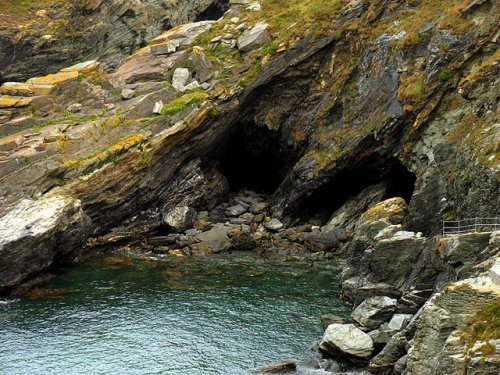 The coast of Cornwall between Treligga and Pendogget
The coast of Cornwall between Treligga and PendoggetSource: https://commons.wikimedia.org/wiki/File:Coast_path_DSC_8981.jpg
Author: Dietrich Krieger

Cornwall is a district in Southwest England. It covers 3,563 sq km (1,376 sq mi) and has a population of 535,000 (2011 estimate). Cornwall is bordered by Devon to the east. It is surrounded by a coastline facing the Atlantic Ocean to the north and west, and with the English Channel to the south. The administrative centre and only city in Cornwall is Truro.
Due to its isolation from the rest of England, Cornwall has managed to retain its Celtic heritage. It is today a popular tourist destination with numerous scenic coastal vistas. The area was historically associated with tin and copper mining. These industries have long been discontinued, but remnants of the mining sites have been well preserved.
Towns in Cornwall
Sights in Cornwall
- Bodmin Moor
- Cape Cornwall
- Isles of Scilly
- Land's End
- Lizard
- St Michael's Mount
- Tamar Valley
- Tintagel
World Heritage Site in Cornwall
 Caves at Tintagel Haven, Cornwall
Caves at Tintagel Haven, CornwallSource: https://commons.wikimedia.org/wiki/File:Caves_in_Tintagel_Haven_-_geograph.org.uk_-_217103.jpg
Author: Pam Brophy

Visiting Cornwall
You can reach Cornwall by train from London. There are regular services from London Paddington to Plymouth (3 hours) and Penzance (5 hours). By road, you can take the A30 highway which continues from the M5 motorway at Exeter. Driving time from London to Cornwall is about 5-6 hours. Roads tend to be congested especially during bank holiday weekends and summers. Bodmin Moor, looking towards Brown Willy, the highest point in Cornwall
Bodmin Moor, looking towards Brown Willy, the highest point in CornwallSource: https://commons.wikimedia.org/wiki/File:Brown_Willy_Bodmin_Moor.jpg
Author: Tom Corser

Map of Ceremonial Counties of England
 Latest updates on Penang Travel Tips
Latest updates on Penang Travel Tips

Copyright © 2003-2025 Timothy Tye. All Rights Reserved.

 Go Back
Go Back